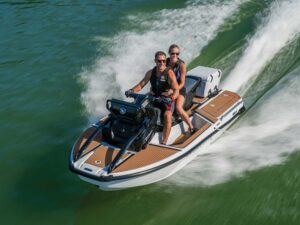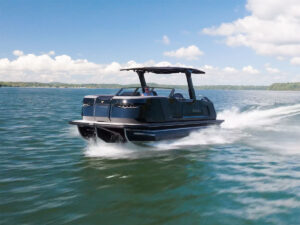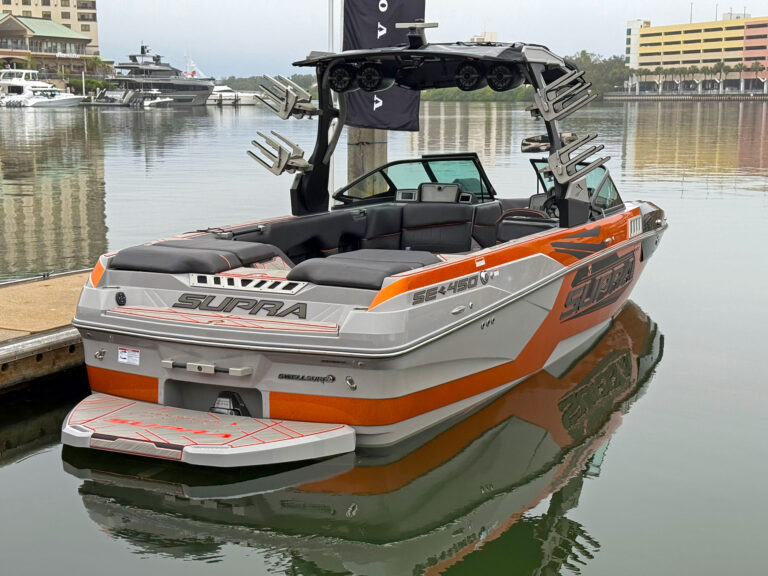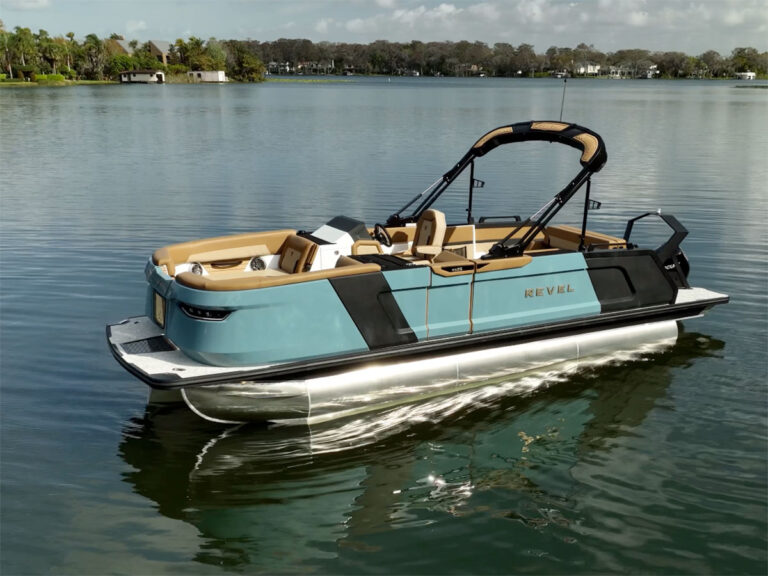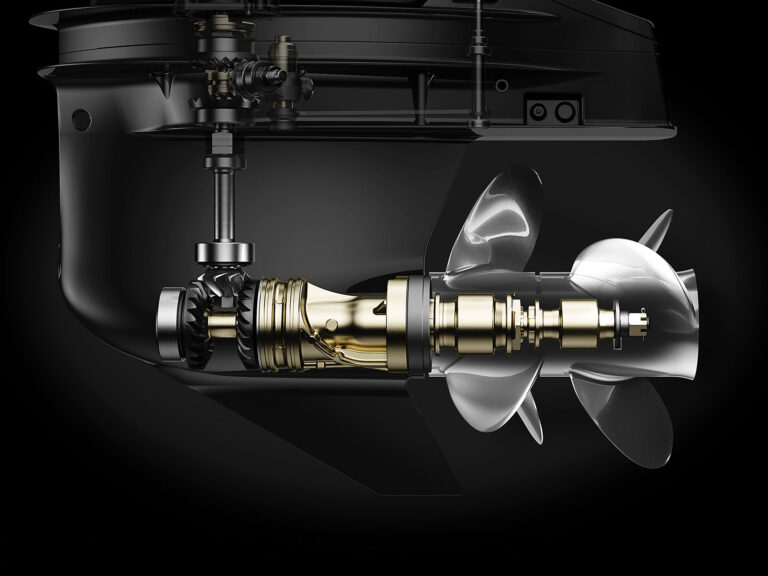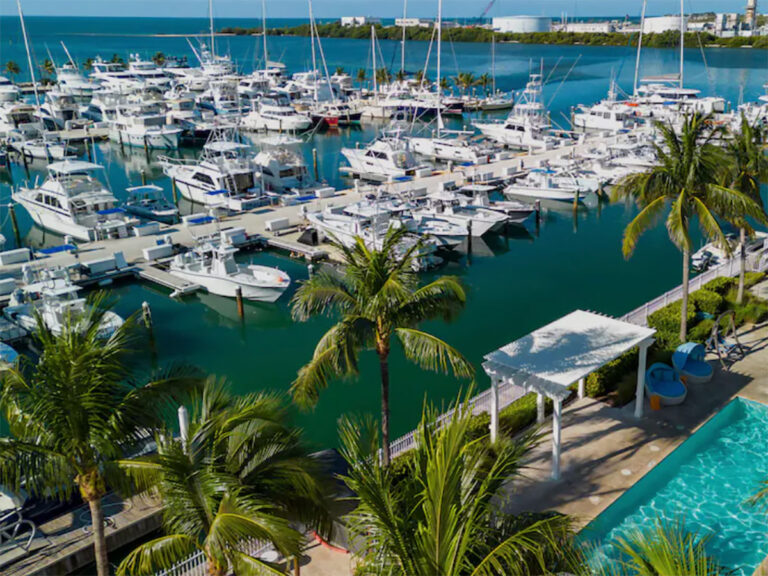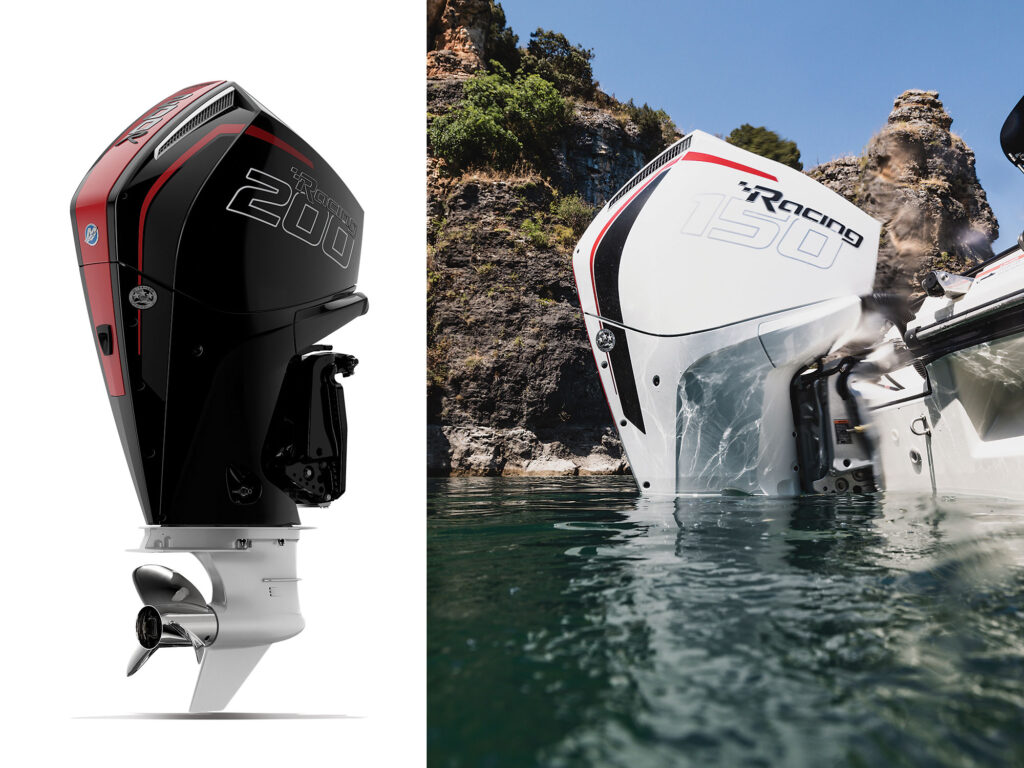
Mercury Racing debuted the 3.4-liter V-6 150R and 200R outboards, providing boaters who seek high-performance outboards with lighter weight and array of performance-oriented choices in things such as gear-case type, gear ratio, and other advancements not available with other outboard engines in this range.
The Mercury Racing 150R and 200R outboards made their debut at that 2024 Cannes Yachting Festival, in France, September 2024, to great acclaim. Prioritizing torque, the design of each delivers exceptional hole shot and acceleration without the weight of a V-8, according to Mercury Racing. Transient Spark Technology electronically adjusts ignition timing as needed, producing additional torque for faster hole shot and acceleration. At full throttle, the 150R develops up to 6,000 rpm, while the 200R tops out at 6,400 rpm.
For comparison, a look at Mercury Marine’s ProXS outboards helps showcase why these new Mercury Racing offerings will prove important for high-performance applications.
For example, the ProXS 150 displaces 3.0 liters and is an inline-four configuration, weighing 456 pounds, compared with the 150R’s 475 pounds (remember, it’s a V-6 displacing 3.4 liters). The ProXS 150 comes with a 2.08-to-1 gear ratio, while the 150R offers a higher 1.85-to-1 ratio, which is better optimized for speed in many situations. The gear cases of each offer water pickups on the nose cone, enabling operation at higher mounting levels, use with a jack plate, or simply at higher trim levels, all off which translate into higher speed. Both are available in 20- and 25-inch shaft lengths, and both offer counter-rotation at the 25-inch shaft length. The V-6 150R provides an 85-amp alternator, compared with the inline-four ProXS 150, which offers a 60-amp alternator.
Looking at the 200 hp power level, we see that the 4.6-liter V-8 ProXS 200 weighs in at 505 pounds, while the Mercury Racing 200R weighs in at a lighter 469 pounds. The ProXS 200 comes with a 1.75-to-1 ratio and either the big, rugged 5.4-inch gear case, or the Torque Master gear case for elevated-mounting height applications. The new Mercury Racing 200R, however, offers different gear-case choices, both with a 1.75-to-1 ratio.
Note that all weights given represent the lightest version of each engine.
The Mercury Racing 200R with a Torque Master gear case proves ideal for heavier boats capable of reaching up to 85 mph. It features a heavy-duty 19-spline stainless-steel prop shaft and is designed to run partially surfaced to propel heavier tournament bass and multispecies fishing boats with maximum speed and control. For boats capable of speeds greater than 85 mph, the surface-piercing design of the Sport Master gear case features low-water pickups and a crescent leading edge to maximize efficiency and speed. The available cambered skeg counteracts prop torque on single-engine installations for improved performance and handling.
The Mercury Racing 200R is available in a 20-inch shaft length, and the ProXS 200 is available in 20- and 25-inch shaft lengths, and with counter-rotation in 25-inch.
The Mercury Racing 150R makes a maximum wide-open throttle rpm of 6,000 and can run on 87-octane fuel. The Pro XS 150 also makes 6,000 rpm at WOT and can also run on regular gas. The 200R makes up to 6,400 rpm, while the ProXS 200 makes up to 6,200 rpm, and both can run on regular gasoline. The warranty is three years limited for all four of these engines.
“With the new 150R and 200R, we are bringing Mercury Racing DNA to our V-6 outboard range. When it comes to bottom-end torque, these engines are best-in-class,” says Jeff Broman, category director at Mercury Racing. “Add the many digital features provided by Mercury’s V-6 platform, and the competition cannot match them.”
Read Next: Mercury Racing 500R Outboard
The digital features Broman references include digital throttle and shift, which gives drivers precise, seamless engine control. Fuel economy also is optimized through built-in GPS-enabled features such as Mercury’s Active Trim, Adaptive Speed Control, and Advanced Range Optimization, which delivers precise fueling throughout the operating range. These features have been described in depth, and more information about each can be found at boatingmag.com, mercurymarine.com, and mercuryracing.com.
Pricing for these outboards depends upon the version selected. The 150R ranges between $18,975 and $21,065. The 200R ranges from $22,550 to $26,950.
These new Mercury Racing outboards should well please boaters seeking high performance. It’s notable that in the current era of powerboating, high-performance and other boating categories, such as fishing and dayboating, often merge. Boat owners now often seek a higher level of performance to go along with a trophy catch, and thrilling one’s guests with an extra turn of speed often proves as desired as enjoying a sunset. For these reasons, we expect to see Mercury Racing’s 150R and 200R outboards powering a variety of craft. Look for our test coming soon.

